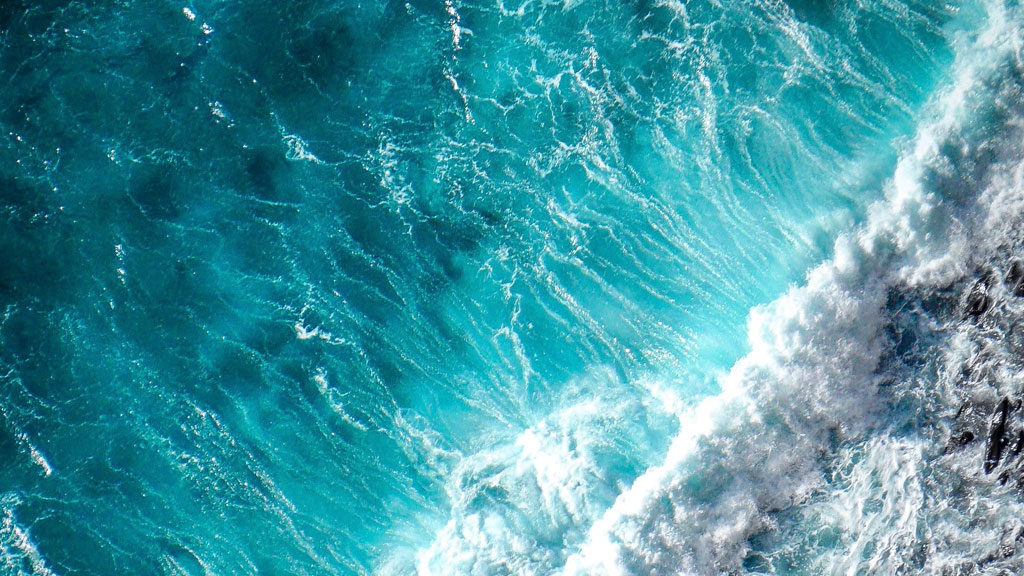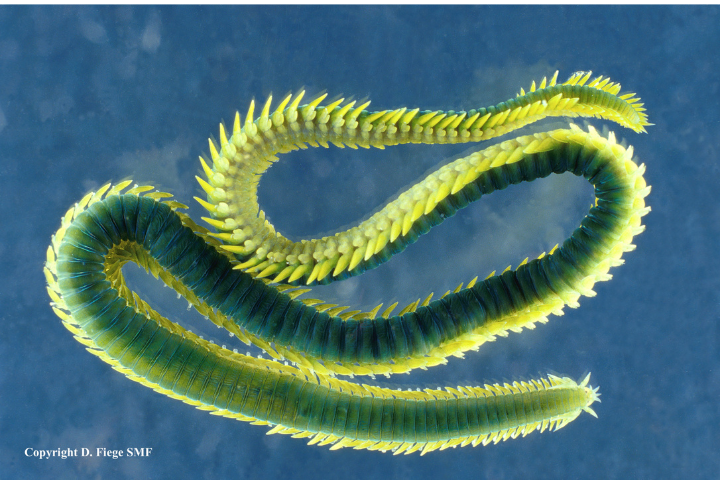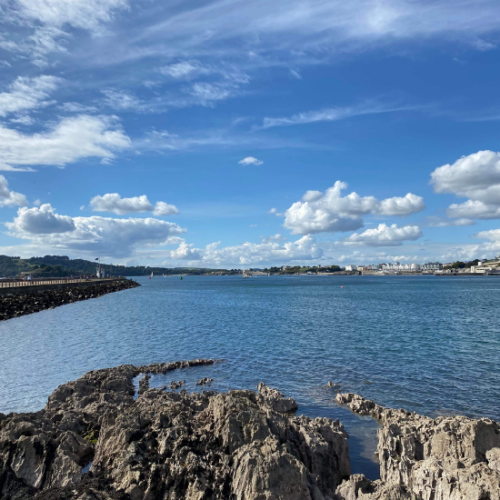The marine environment is made up of many complex habitats, some of which are so extreme it is hard to imagine any life could survive there. However, life persists, with incredible adaptations to make survival in these challenging environments possible.
‘Absolute stagnation nowhere exists in the ocean, not even at its greatest depths’ – Dittmar 1884.
The deep ocean, hypoxic/anoxic waters and sediments, polar, and hypersaline environments are all extreme marine environments, presenting their own unique challenges. Microbes, known as extremophiles, are generally the primary producers for these areas and form the basis of food chains to support a huge variety of other organisms in the surrounding area. For example, at hydrothermal vents, microbes convert the mineral-laden fluid into enough energy to support some of the most productive ecosystems in the world.
Deep Sea
Life exists at all depths of the ocean however, prior to 1870, it was assumed that the deep ocean lacked oxygen and therefore was devoid of life. Whilst oxygen is absent from some areas of the ocean, this is much less common than initially thought [1]. Even a lack of oxygen does not mean an absence of life; the deep, anoxic sediments of the hypersaline L’Alalante basin in the Mediterranean Sea are home to Loricifera – metazoans who lack mitochondria and use an anaerobic metabolism previously unobserved in multicellular organisms [2].
Once past 200m depth, light no longer penetrates and therefore photosynthesis ceases. As depth increases, hydrostatic pressure and environmental stability increase but food input and temperature decrease. Organisms in the deep sea have evolved numerous adaptations to these conditions. Notably, in response to lack of light, many organisms create their own through bioluminescence; to attract prey, distract predators and to communicate. The Green Bomber Worm is a small polychaete, found up to 3000m deep, which appear to use bioluminescence to evade predation by releasing small, chemical filled sacs that glow green once released [3].
Polar regions
The Southern Ocean surrounding Antarctica has an average temperature of around 2oC and has remained relatively stable for more than 5 million years [4]. Many animals would freeze to death at these temperatures, but approximately 17,000 species of marine invertebrate, along with a multitude of vertebrates, have adapted to survive in these chilly waters [5]. Adaptations to the cold include larger body sizes and egg production, antifreeze proteins in fish blood and very slow growth rates (Peck, L. S., 2018). In addition to antifreeze proteins, fish such as icefish lack red blood cells and haemoglobin, to make their blood less viscous and therefore allow it to flow easily at low temperatures. Instead, they transport oxygen in solution around their bodies [5]. Gigantism, or larger body size, is particularly common in pycnogonids (sea spiders); in British waters they may grow to have a leg span of 20mm, whereas species in the Southern Ocean grow to have a leg span of up to 750mm [6]. A popular theory for this phenomenon is that animals can afford to grow larger and still get enough oxygen, despite their lower surface area to volume ratio, due to the higher proportion of dissolved oxygen in cold water. Additionally, slower metabolic rates at low temperatures mean that they require less oxygen.
Polar regions are always providing surprises. Life is found in unexpected places and with unusual adaptations to the cold. A lot of what we know about these areas is still based on theories, with an unusual discovery by the British Antarctic Survey (BAS) earlier this year bringing into question the theory that the abundance of life under ice shelves decreases the further from the open ocean it is. BAS researchers accidentally discovered the first record of a hard substrate community living 900m below an ice shelf, 160 miles from open water [7].
Intertidal Zone
Although more familiar to us, the intertidal zone is also a highly stressful place to live. As this zone is covered by high tide and exposed at low tide, the animals living there experience large fluctuations in temperature, salinity, and oxygen levels.
The main stress not experienced in other environments is desiccation – when animals are exposed to the air for long periods at low tide they may dry out. This is especially difficult for sessile animals who cannot move to avoid being exposed. As well as desiccation, they must also combat heat stress during low tide. Many intertidal organisms use evaporation of water from their bodies to reduce heat, but this can increase the likelihood of desiccation, so they must be able to store adequate amount of water. Barnacles store water in their mantle cavity and animals with shells can seal their shell opening with an operculum or by gripping tightly to a rock sealing water inside.
References
- Pilson, M. (2012). Anoxic marine environments. In An Introduction to the Chemistry of the Sea (pp. 327-341). Cambridge: Cambridge University Press. doi:10.1017/CBO9781139047203.013
- Danovaro, R., Dell’Anno, A., Pusceddu, A. et al. The first metazoa living in permanently anoxic conditions. BMC Biol 8, 30 (2010). https://doi.org/10.1186/1741-7007-8-30
- Osborn KJ, Haddock SHD, Pleijel F, Madin LP, Rouse GW (2009). “Deep-sea, swimming worms with luminescent “bombs””. Science. 325 (5943): 964. doi:10.1126/science.1172488. PMID 19696343
- Barnes, D.K.A., Ashton, G.V., Morley, S.A. et al. 1 °C warming increases spatial competition frequency and complexity in Antarctic marine macrofauna. Commun Biol 4, 208 (2021). https://doi.org/10.1038/s42003-021-01742-w
- Peck, L.S., 2018. Antarctic marine biodiversity: adaptations, environments and responses to change. Oceanography and Marine Biology: An Annual Review, 56, 105-236.
- coolantarctica.com/Antarctica%20fact%20file/wildlife/antarctic_animal_adaptations2.php
- British Antarctic Survey, Discovery of life beneath Antarctica’s ice shelves. https://www.bas.ac.uk/media-post/discovery-of-life-beneath-antarcticas-ice-shelves/











